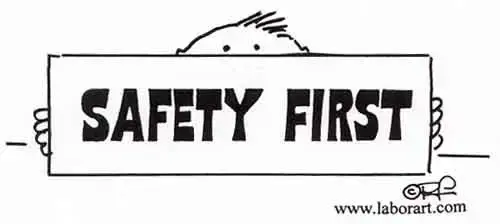Father Hegartys definition of Industrial Unionism;
(edited)
The Structure of the Industrial System
A labor organization to correctly represent the working class must have two things in view.
First—It must combine the wage-workers in such a way that it can most successfully fight the battles and protect the interests of the working people of today in their struggle for fewer hours, more wages and better conditions.
TWU fails here. Over the last twenty years they have extended the workweek by eliminating the 8 hour day, making it 8.5 hours for 8 hours pay. They have eliminated one week of vacation to the point where for the first five years of employment they only have one week of vacation. They have negotiated defacto paycuts for twenty years and recently a 17.5% paycut. They have negotiated away workrules and benifits to the companys favor.
Secondly—It must offer a final solution of the labor problem—an emancipation from strikes, injunctions, bull-pens and scabbing of one against the other.
It fails again here. The TWU negotiated work away from one group to another lower paid group. Basically thats scabbing. Our fellow TWU members scabbed our work under the directive of their Union! They did the work that was ours for less money.
All workers of one industry in one union; all unions of workers in one big labor alliance the world over.
Here they fail again. Our industry is split up between several so called Industrial unions. Each one has their own seperate piece of the pie and the TWU is willing to sell out their members to get a bigger slice of the pie. THey are willing to violate the very first concept of Industrial Unionism, fewer hours, more wages and better conditions in order to get more members.
So the TWU claims that they are an Industrial union, yet they will organize workers from ANY industry, and not seek to unite any whole industry. From fishing wheel assembly workers to casino workers to subway, bus and airline workers the TWUs apparant agenda is to collect dues from wherever they can get them. In the meantime all those different industrys workers remain divided up among many other so called Industrial unions. Its not a matter of following any particular industry, its more a matter of grab what you can wherever you can. Thats not Industial unionism, its business unionism.
Business unionism is the scourge of the labor movement. Its goal is not to really better the conditions of its members but to claim that is what they are trying to do while the select few, who have successfully isolated power in themselves make themselves rich off the spoils.
The TWU can not be called an Industrial union, since you can not clearly define what Industry they specialize in. They are certainly not a craft union. They are in fact a business union.
Airline workers can no longer afford to support business unionism. The time has come. AMFA and the AGW now!
(edited)
The Structure of the Industrial System
A labor organization to correctly represent the working class must have two things in view.
First—It must combine the wage-workers in such a way that it can most successfully fight the battles and protect the interests of the working people of today in their struggle for fewer hours, more wages and better conditions.
TWU fails here. Over the last twenty years they have extended the workweek by eliminating the 8 hour day, making it 8.5 hours for 8 hours pay. They have eliminated one week of vacation to the point where for the first five years of employment they only have one week of vacation. They have negotiated defacto paycuts for twenty years and recently a 17.5% paycut. They have negotiated away workrules and benifits to the companys favor.
Secondly—It must offer a final solution of the labor problem—an emancipation from strikes, injunctions, bull-pens and scabbing of one against the other.
It fails again here. The TWU negotiated work away from one group to another lower paid group. Basically thats scabbing. Our fellow TWU members scabbed our work under the directive of their Union! They did the work that was ours for less money.
All workers of one industry in one union; all unions of workers in one big labor alliance the world over.
Here they fail again. Our industry is split up between several so called Industrial unions. Each one has their own seperate piece of the pie and the TWU is willing to sell out their members to get a bigger slice of the pie. THey are willing to violate the very first concept of Industrial Unionism, fewer hours, more wages and better conditions in order to get more members.
So the TWU claims that they are an Industrial union, yet they will organize workers from ANY industry, and not seek to unite any whole industry. From fishing wheel assembly workers to casino workers to subway, bus and airline workers the TWUs apparant agenda is to collect dues from wherever they can get them. In the meantime all those different industrys workers remain divided up among many other so called Industrial unions. Its not a matter of following any particular industry, its more a matter of grab what you can wherever you can. Thats not Industial unionism, its business unionism.
Business unionism is the scourge of the labor movement. Its goal is not to really better the conditions of its members but to claim that is what they are trying to do while the select few, who have successfully isolated power in themselves make themselves rich off the spoils.
The TWU can not be called an Industrial union, since you can not clearly define what Industry they specialize in. They are certainly not a craft union. They are in fact a business union.
Airline workers can no longer afford to support business unionism. The time has come. AMFA and the AGW now!

